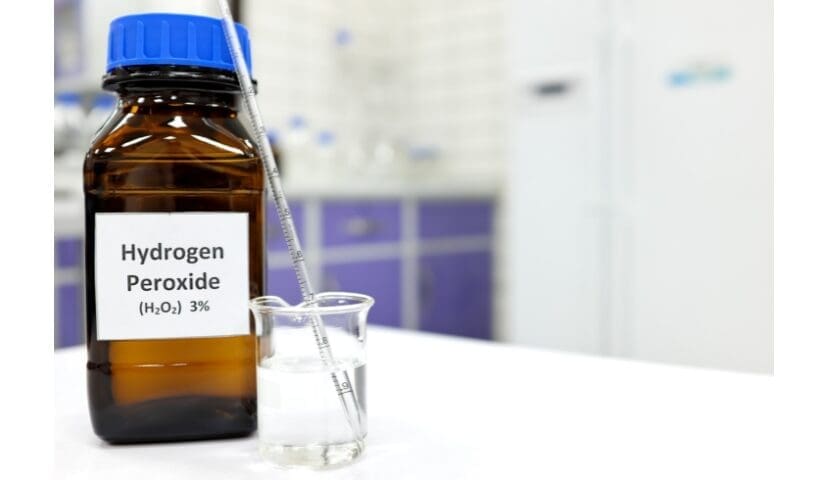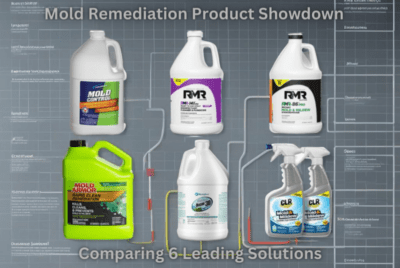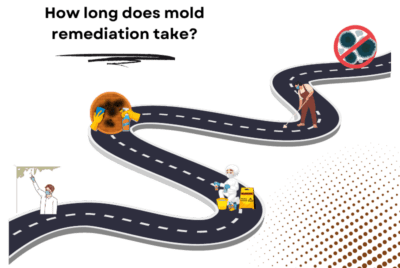Does Hydrogen Peroxide Really Kill Mold? A Deep Dive into the Truth
Hey there! If you’ve stumbled upon this article, chances are you’re dealing with a pesky mold problem and wondering, ‘Does Hydrogen Peroxide Really Kill Mold?’ Well, you’re in the right place! Let’s dive deep into the world of mold and see if hydrogen peroxide is the hero we’ve all been waiting for.
Introduction: The Sneaky World of Mold
First off, let’s chat about mold. It’s that uninvited guest that loves damp, dark corners of our homes. Not only is it unsightly, but it also brings along a host of health issues, especially for those with allergies or asthma. But here’s the kicker: can a simple household item like hydrogen peroxide send mold packing?
The Science Behind Hydrogen Peroxide
Hydrogen peroxide, chemically represented as H2O2, is a pale blue liquid in its pure form. It’s a bit like water’s feisty sibling. The extra oxygen molecule makes it a powerful oxidizer, which is why it’s so effective against mold. When it breaks down, it releases oxygen and water, making it environmentally friendly. But how does this relate to mold?
Mold cells have certain components that are susceptible to oxidation. When you apply hydrogen peroxide, it breaks down the cell walls of the mold, effectively stopping its growth. This is why you see that fizzing action – it’s the rapid release of oxygen, breaking down organic compounds in its path.
Hydrogen Peroxide vs. Mold: The Epic Battle
When it comes to the question, ‘Does Hydrogen Peroxide Really Kill Mold?’, the answer is a bit nuanced. Hydrogen peroxide, that bubbly solution in the brown bottle, is more than just a wound cleaner. When it meets mold, it releases oxygen rapidly, causing the mold’s surface to break down. Imagine it as a mini-explosion on the mold’s surface! On solid surfaces, it can be a game-changer. But, and it’s a big BUT, it doesn’t necessarily kill mold entirely, especially if the mold has made a cozy home in porous surfaces.
Why Not Just Use Bleach?
A common misconception is that bleach is the ultimate mold killer. While bleach might make your tiles sparkle and look mold-free, it doesn’t get to the root of the problem, especially on porous surfaces. Bleach can’t penetrate deep, meaning mold can make a comeback. Plus, let’s not forget the strong, often overpowering smell of bleach, which can be harmful in enclosed spaces.
Hydrogen peroxide, on the other hand, can seep into those tiny crevices and attack mold at the source. And without the harmful fumes!
Safety First!
Before you don your cleaning gloves, a word of caution. While hydrogen peroxide is generally safe, it can be a bit of a diva. It doesn’t like sunlight and can throw a fit (read: burst) if its container gets contaminated. And if you’ve got sensitive skin like me, you might want to wear gloves, as it can be a tad irritating.
The Hidden Dangers of Mycotoxins
Earlier, we touched upon mycotoxins. But what are they, really? Think of them as mold’s venom. They’re toxic compounds produced by certain mold species. Even if you kill the mold, these toxins can linger, posing health risks. Symptoms of mycotoxin exposure range from fatigue and headaches to more severe conditions like immune system suppression.
This is where hydrogen peroxide’s limitation comes into play. While it can tackle the mold, it doesn’t neutralize these toxins. So, if you suspect your mold is of a toxic variety, it’s crucial to consult professionals.
Beyond Mold: Other Uses of Hydrogen Peroxide
Hydrogen peroxide isn’t just a one-trick pony. Its antiseptic properties make it great for wound cleaning. It’s also a popular choice for disinfecting surfaces, especially in hospitals. Some even swear by its teeth-whitening capabilities, though it’s essential to use it cautiously to avoid damaging your enamel.
The Environment and Hydrogen Peroxide
In today’s eco-conscious world, it’s vital to choose cleaning agents that won’t harm our planet. Hydrogen peroxide stands out as an eco-friendly option. When it breaks down, it turns into water and oxygen, leaving no harmful residues behind. So, not only are you keeping your home mold-free, but you’re also doing Mother Earth a favor!
The Final Verdict
So, does Hydrogen Peroxide really kill mold? While hydrogen peroxide is a formidable opponent against mold, it’s essential to understand its strengths and limitations. For surface mold, it can be a quick and eco-friendly solution. But for deep-seated, toxic mold varieties, professional intervention might be the best course of action.
Conclusion
Mold is a challenge many homeowners face. But with the right knowledge and tools, it’s a battle you can win. Hydrogen peroxide offers a safe, effective, and environmentally friendly approach to mold removal. However, always remember to address the root cause of mold to ensure it doesn’t return. Stay informed, stay safe, and here’s to a mold-free living space!
FAQs
-
Is hydrogen peroxide better than bleach for mold removal?
- While both have their merits, hydrogen peroxide is less toxic and can penetrate porous surfaces, unlike bleach.
-
Can I mix hydrogen peroxide with other cleaning agents?
- It’s best to use hydrogen peroxide on its own to avoid any unwanted chemical reactions.
-
How long should I leave hydrogen peroxide on mold before cleaning?
- Typically, 5-10 minutes should do the trick. You’ll see it fizzing as it works its magic!
-
Are there any surfaces I should avoid using hydrogen peroxide on?
- Hydrogen peroxide can bleach certain fabrics and surfaces, so always do a patch test first.
-
How can I prevent mold from returning?
- Keep your home dry, fix leaks promptly, and ensure good ventilation. Remember, mold hates fresh air!
-
How often should I clean mold-prone areas with hydrogen peroxide?
- Regularly inspect and clean mold-prone areas. If you live in a humid environment, consider cleaning these areas every couple of weeks.
-
Can I use hydrogen peroxide on colored fabrics?
- Be cautious. Hydrogen peroxide can bleach fabrics. Always do a patch test first.
-
Is hydrogen peroxide safe for pets?
- While it’s safer than many chemicals, ensure the area is well-ventilated and keep pets away until the cleaned area is dry.
-
How do I store hydrogen peroxide?
- Store in a cool, dark place, preferably in its original brown bottle to protect it from light.




